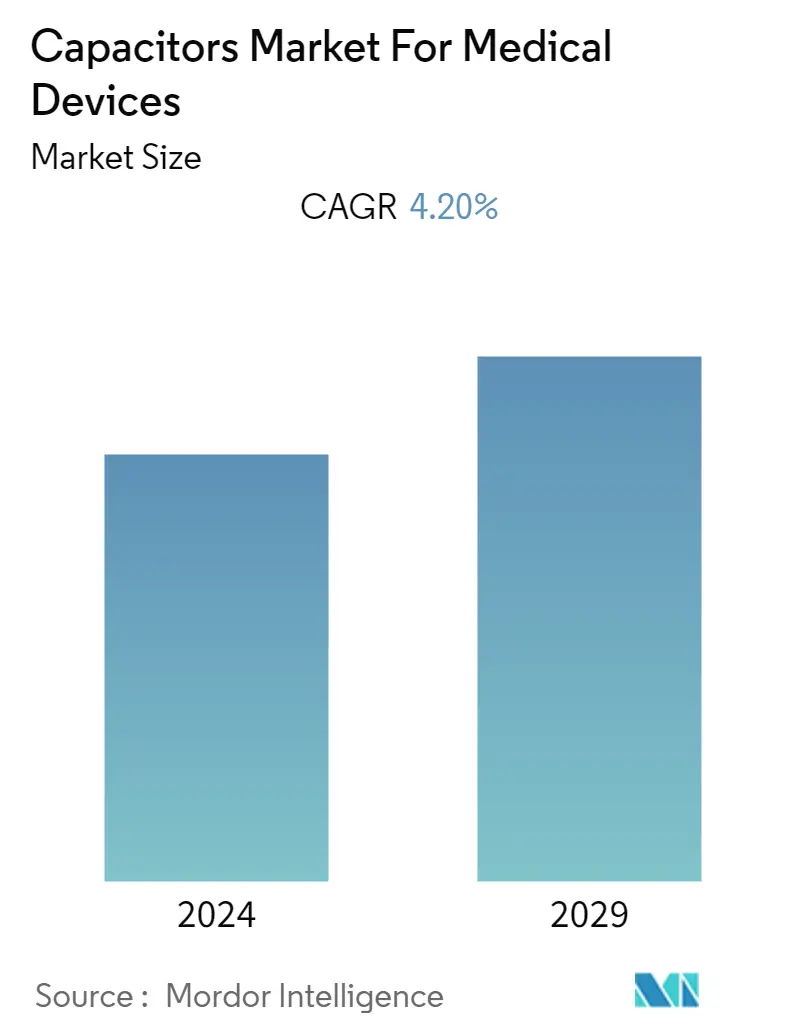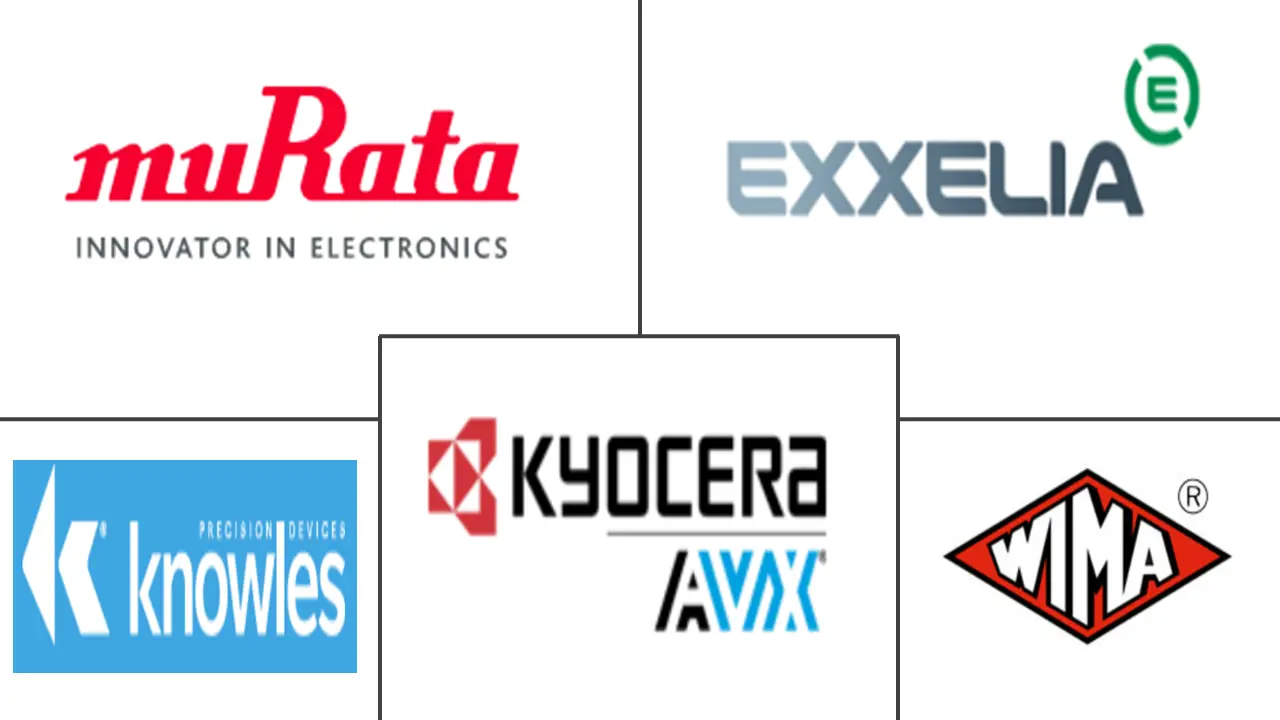Market Size of Capacitors Industry For Medical Devices

| Study Period | 2019 - 2029 |
| Base Year For Estimation | 2023 |
| CAGR | 4.20 % |
| Fastest Growing Market | Asia Pacific |
| Largest Market | North America |
| Market Concentration | Low |
Major Players
*Disclaimer: Major Players sorted in no particular order |
Need a report that reflects how COVID-19 has impacted this market and its growth?
Capacitors Market Analysis
The Capacitors Market for Medical Devices is valued at USD 1.2 billion in the current year and is expected to reach around USD 1.5 billion by the end of the forecast period, registering a CAGR of 4.2% during the forecast period. In diagnostic, imaging, patient monitoring, medication administration, and dispensing applications, passive components play a significant role in medical systems. For instance, implanted medical electronics are often powered by batteries or capacitors that must be removed from the body once they have served their purpose since they are not biodegradable.
- Capacitors are used in implanted medical equipment like pacemakers, insulin pumps, and defibrillators, as well as portable and wearable ones like electrocardiograms, ultrasound echo machines, and blood gas analyzers. High dependability, a long service life, and passing rigorous screening tests are all requirements. Today, meeting consumer demand frequently entails miniaturization, capacitor design, and material improvements.
- Electronic devices such as bionic implants or artificial organs perform like biological organisms. The artificial kidney, bio-lung, and artificial pancreas are a few well-known medical bionics currently being produced or developed. The need for medical electronics in the class-III device category is being driven by the expanding elderly population, which is also propelling technological breakthroughs in the field of bionic implants.
- Along with implantables, the need for portable and wearable medical technology has grown as medicine starts to leave the confines of the traditional environment. To improve patients' quality of life, conventional benchtop equipment are being downsized and become increasingly wearable and implantable. For instance, a conventional cochlear implant gives patients who are profoundly deaf a feeling of sound. The implant is a little device, therefore using a more portable, high-reliability capacitor is necessary for this size range. These trends will drive the market growth for the capacitors in manufacturing the medical devices.
- The cost of raw materials, which is a variable cost, is the highest one involved in the manufacture of capacitors. Profit margins may suffer from changes in price or availability for these essential feedstocks. Tantalum capacitors are often chosen for applications with capacitance ranges at or above 10 μF in the medical industry, whereas MLCCs are typically thought to be the best option for applications with capacitance ranges below 1 μF. It is anticipated that in 2023, the cost of the metals like copper, Nickel is continue to rise which can impact the production of required capacitors during the projected period.
